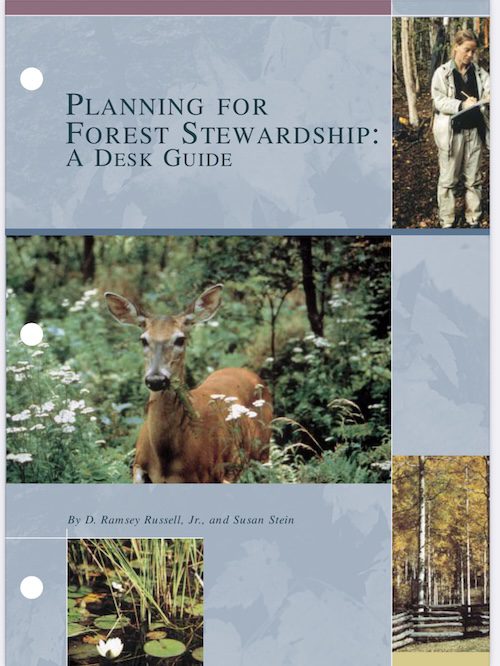Planning for Forest Stewardship: A Desktop Guide

An essential resource for private forest landowners, conservationists, and forestry professionals aiming to develop comprehensive forest stewardship plans. Co-authored by D. Ramsey Russell, Jr., then Refuge Manager at the U.S. Fish and Wildlife Service’s Tallatchie National Wildlife Refuge, and Susan Stein, Forest Stewardship Coordinator at the USDA Forest Service, this guide provides a structured approach to sustainable forest management.
If you’re a private landowner aiming to enhance wildlife habitat, increase timber value, and ensure long-term sustainability of your forested property, a well-crafted Forest Stewardship Plan is essential.
Planning for Forest Stewardship: A Desk Guide, co-authored by Ramsey Russell and published by the USDA Forest Service in 2002, offers a comprehensive, step-by-step approach to sustainable forest management.
Key Components of a Forest Stewardship Plan:
•Landowner Objectives: Define clear goals—be it wildlife conservation, timber production, recreation, or legacy planning.
•Resource Inventory: Assess current forest conditions, including tree species, soil types, water resources, and existing wildlife habitats.
•Management Recommendations: Develop strategies for habitat enhancement, selective harvesting, reforestation, erosion control, and invasive species management.
•Implementation Schedule: Outline a timeline for executing management activities and monitoring progress.
Benefits of Implementing a Forest Stewardship Plan:
•Enhanced Wildlife Habitat: Create diverse ecosystems that support a variety of species.
•Sustainable Timber Production: Manage forest resources to provide ongoing economic benefits.
•Conservation Compliance: Align with federal and state guidelines, potentially qualifying for assistance programs and certifications.
•Legacy Planning: Ensure your land remains a valuable resource for future generations.
This desktop guide was initially designed as a resource to assist state forestry agencies with implementing Forest Stewardship plans on private lands. Since its inception in 1991, the USDA Forest Stewardship Program has assisted over 200,000 landowners in managing more than 20 million acres of private forest land. This desk guide serves as a vital tool in continuing that mission, providing structured guidance to ensure forests remain a valuable resource for future generations.
The guide emphasizes the importance of balancing multiple forest values, including timber production, wildlife habitat, water quality, and recreational opportunities.
Five-step process for creating a forest stewardship plan:
1. Identify the Plan: Establish the scope and objectives of the stewardship plan.
2. Present Management Objectives: Define clear, achievable goals for forest management.
3. Describe Baseline Habitat Conditions: Assess current forest conditions to inform management decisions.
4. Present Management Recommendations: Develop actionable strategies to meet management objectives.
5. Include Supplemental Information: Provide additional resources and data to support the plan.
By following this guide, landowners can create tailored plans that align with both personal goals and broader conservation efforts. The guide also serves as a valuable tool for professionals assisting landowners in the stewardship planning process.
Ready to optimize your land for wildlife and sustainability? For a comprehensive understanding of forest stewardship planning, access the full guide here: Planning for Forest Stewardship: A Desk Guide (PDF).







